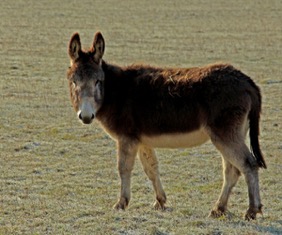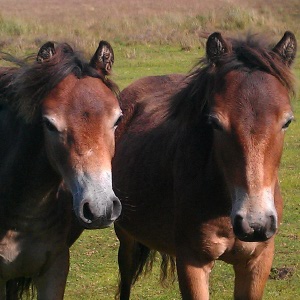how to train in……Chiropractic for Animals & Animal Manipulation

Do you know someone who'd like to learn how to become a chiropractor working with animals?
This page has been compiled to answer some of the most common questions. If you've any further queries please email info@taranet.co.uk and I'll try to help, or please contact the organisations mentioned.
Are qualifications needed to become a Chiropractor working with animals?
In the UK in order to use the title 'chiropractor', practitioners must be registered with the General Chiropractic Council (GCC). Therefore you need to be fully trained and obtain a recognised qualification.
Unfortunately, there are therapists calling themselves 'chiropractors' who are not qualified. So it's important for the animal owner to be able to distinguish between qualified and unqualified therapists. Having a qualification and being registered with the GCC enables this.
Remember - It is an offence for any person, other than the owner of the animal, to treat an animal unless the permission of the vet in charge of the case or to whom the animal would be referred is sought and obtained. A Veterinary Surgeon is extremely unlikely to refer any customers to you unless you are qualified and insured.
What qualifications can I get & how do I get them?
The GCC does not recognise any courses in animal chiropractic. To be called a 'chiropractor' the therapist must have trained as a human chiropractor and be registered with the GCC as such.
However, there are courses available based upon chiropractic techniques for animals. These can be taken after training as a human chiropractor or completion of another eligible course.
Veterinary Chiropractic
The International Veterinary Chiropractic Association (IVCA) offers membership to qualified veterinarians (registered with the Royal College of Veterinary Surgeons) or chiropractors (registered with the General Chiropractic Council), who have completed an IVCA approved course. At present, there are 4 IVCA recognised Veterinary Chiropractic educational establishments who run basic, advanced and continuing professional development courses in England, Germany, Spain and U.S.A.
The IVCA also requires members to undertake undertake regular continuing professional development.
What can I expect on a basic Veterinary Chiropractic course?
All IVCA approved basic veterinary chiropractic courses consist of a minimum of 210 hours of lectures in classroom and laboratory (plus home study). Topics studied include: anatomy, neurology, biomechanics, relevant pathology, physiology, rehabilitation, ethics, philosophy and legalities.
Get more information on how you can train in veterinary chiropractic. Visit the websites featured in the Contacts section near the end of this page
Options for Animals
This organisation offers a UK animal chiropractic course. Completion of this course enables membership of RAMP (Register of Animal Musculo-skeletal Practitioners).
Get more information at their website here
Animal Manipulation
The McTimoney Chiropractic College offers Masters level courses in both Animal Manipulation, (including an "Osteopathic Pathway"), plus also Chiropractic (small animals).
Entry Requirements:
- Fully qualified and registered in a manipulative therapy (e.g. trained human chiropractor, osteopath, physiotherapist).
- NB: the Chiropractic (small animals) course is designed for those who're already qualified chiropractors only.
- Or hold a BSc in Equine or Animal Science
- Or are a member of the Royal College of Veterinary Surgeons.
- Experience of working with horses or dogs (or other animals). For horses, usually BHS Stage I and II is acceptable level of knowledge.
- Students who do not hold formal academic qualifications may submit a portfolio of certified experience for consideration.
There is also this course, which is an option for anyone wanting to learn how to assist equine physical performance.
ICAT Equine Physical Therapy and Myopractic Practitioner Course
The main aim of the Institute of Complementary Animal Therapies (ICAT) Equine Physical Therapy And Myopractic Practitioner course is to enable candidates to gain the theoretical and practical skills required in order to provide equine myopractic treatments. Candidates will be taught mobilisation and myopractic techniques to assist equine physical performance, reduce the recurrence of a problem, aid recovery and support rehabilitation.
The ICAT Equine Physical Therapy And Myopractic Practitioner course is taught over eighteen months. Candidates attend bi-monthly tutorials, as well as continuing their studies with practical and theory coursework between tutorials.
Successful completion of this qualification offers graduates progression routes within the equine health, wellbeing and rehabilitation industries.
Further details such as entry requirements, fees, recommended reading lists, location, accommodation details and booking forms can be obtained from The ICAT here.
Why qualifications are important to your customers?
Being qualified in Veterinary Chiropractic or either of the Animal Manipulation courses above means that you are suitably qualified to practise. By proving that you have undertaken a rigorous training and achieved nationally recognised qualifications, potential customers know that they are going to receive a good standard of expertise.
In addition you are only likely to obtain insurance cover if you are a qualified therapist - which your potential customers are likely to find a very important issue when choosing between therapists.
Furthermore, Veterinary Surgeons will only refer customers to you if you are registered and fully qualified. Remember - It is an offence for any person, other than the owner of the animal, to treat an animal unless the permission of the vet in charge of the case or to whom the animal would be referred is sought and obtained.
A fully qualified Veterinary Chiropractor or Animal Manipulator will always work within the permission of and liaise with the Veterinary Surgeon of the animal.
Contact Links:
- McTimoney Chiropractic College
- International Veterinary Chiropractic Association
- General Chiropractic Council
- British Veterinary Chiropractic Association
- Institute of Complementary Animal Therapies (ICAT)
- Options for Animals
- Register of Animal Musculoskeletal Practitioners
Your Number One Complementary Animal Therapy Career Guides:
- Canine Bowen Therapy
- Canine Massage
- Equine Bowen Therapy
- Equine Massage
- Equine Manual Lymph Drainage Therapy
- Hydrotherapy
- Osteopathy for Animals
- Physiotherapy for Animals
- Thermography for Horses
- Veterinary Acupuncture
